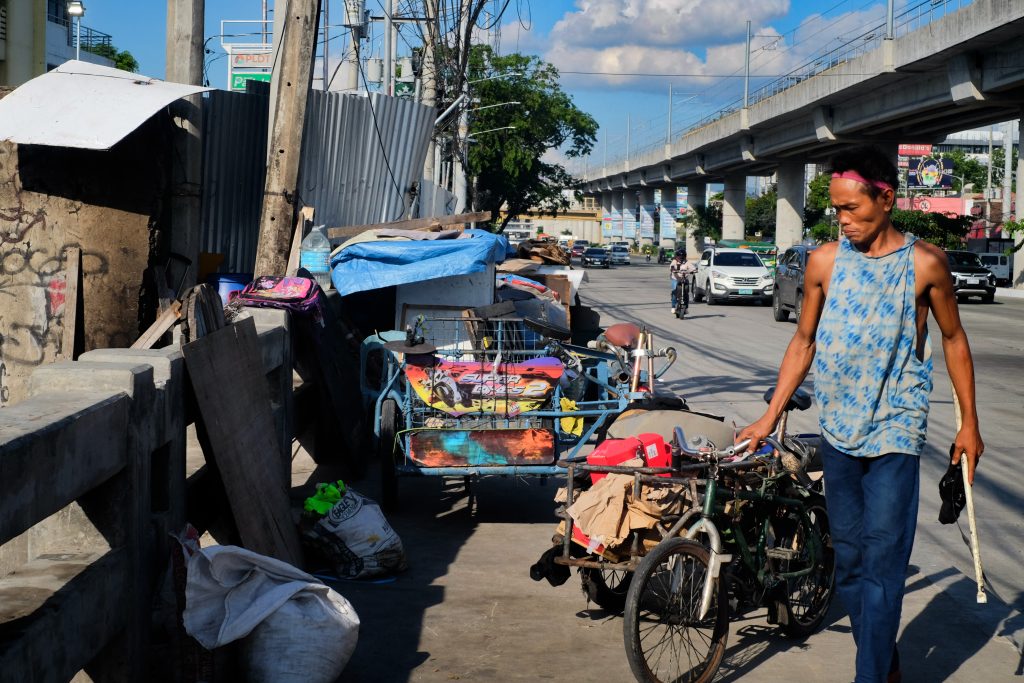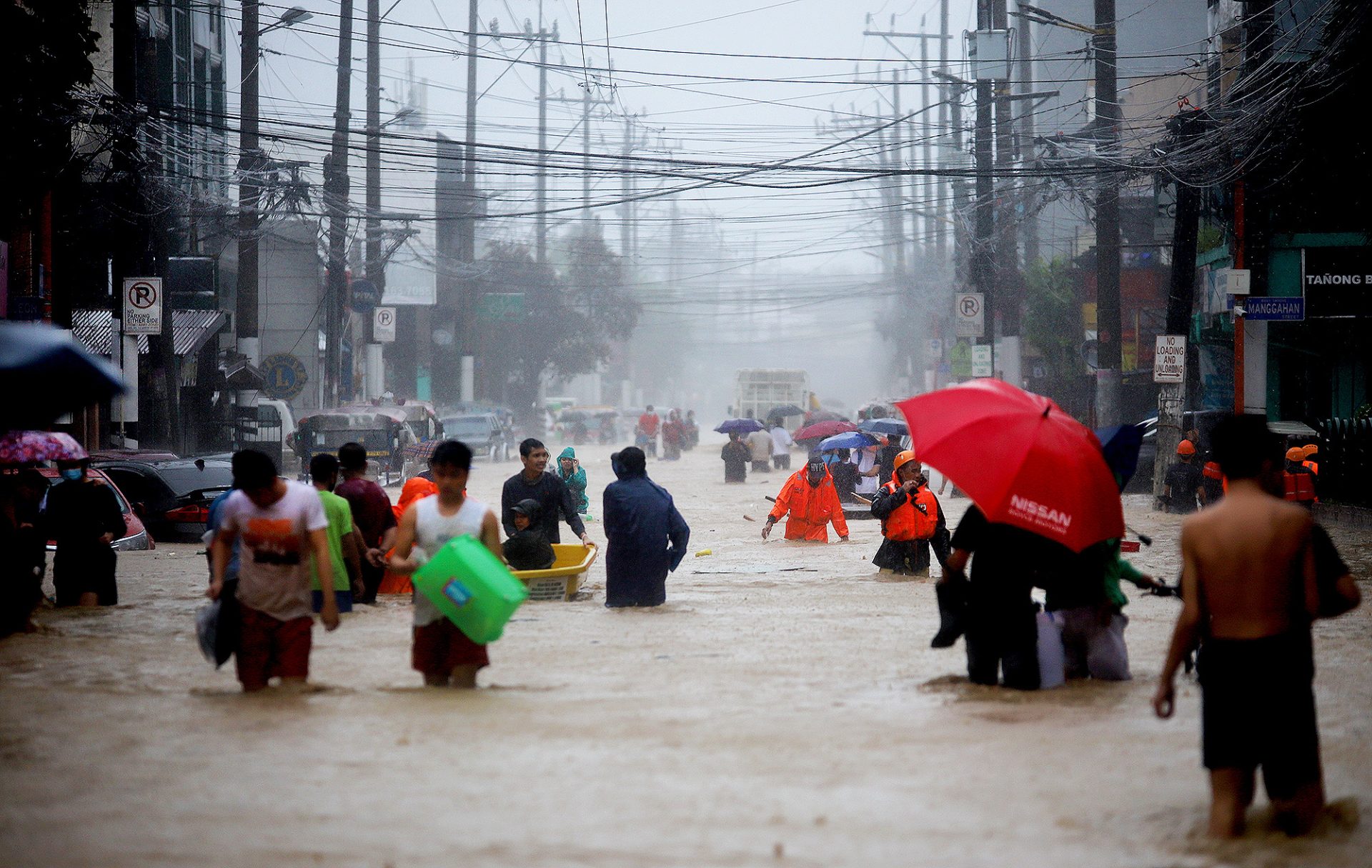The piercing heat of the afternoon sun did not prevent junk collector Joseph Devibar from racing with cars in the busy Marcos highway in the suburbs of the Philippine capital.
He was collecting junk — cardboards and corrugated iron — from warehouses and restaurants that he later stores in a shanty he shares with his friend, Boyet, Boyet’s wife, and young children.
“I store these because it has been raining hard in the past days … at least we have something for cover,” said the 38-year-old.
Joseph earns as much as PhP300 (US$6) a day if he finds some good junk, unless he uses it for his shanty. “It’s better than having nowhere to take shelter,” he said.
The junk collector has been everywhere in the past eight years after running away from his family. He has been all over the metropolis, even living under bridges and on rail tracks.
At the height of the pandemic, he sought refuge under a bridge in the city of Marikina, but moved up to the mountains of Antipolo after Typhoon Vamco (local name: Ulysses) hit the Philippine capital in November 2020.
The typhoon left the already pandemic-stricken Philippine economy with US$12.5 million worth of damage.
Marikina and its nearby cities are usually inundated by floodwaters from the nearby river that catches run-off water from the Sierra Madre mountains.
“It’s sunny now, but later, the rain might pour,” said Joseph, who would squeeze himself inside the shanty with his companions during downpours.

The state weather bureau, Philippine Atmospheric, Geophysical, and Astronomical Services Administration, has already announced the start of the rainy season.
Scattered to widespread rain showers and thunderstorms have been experienced across the country in the past week, even with no tropical cyclone developments observed in the country’s area of responsibility.
La Niña, a weather pattern that drives more rains, is in effect, resulting in the increased likelihood of above normal rainfall conditions.
The weather bureau said the ongoing phenomenon is likely to persist until June to August 2022.
La Niña is the cool phase of the naturally occurring El Niño-southern oscillation, which is a coupled ocean-atmosphere climate variability that disrupts large-scale air movements in the tropics.

Impact of climate crisis
Virginia Benosa-Llorin, Greenpeace Philippines senior campaigner for climate change, told LiCAS News that the early onset of the rainy season is brought about by the climate crisis.
“The only uncertainty we face every year is how bad it will be,” she said, adding that people can still do something to lessen the impact of climate change.
“We need to be vigilant, to prepare. We need to change lifestyle, avoid single-plastic, be mindful consumers, dietary shift,” she said. “But more importantly, let’s demand from the government to take immediate and concrete action.”
Next month, the Philippines, one of the most climate crisis-vulnerable countries, will see a new sitting president in Ferdinand Marcos Jr. who is yet to bared his plans for climate action.
The presumptive president remains silent on his plan about the environment, except for this expressed intention to study the revival of the Bataan Nuclear Power Plant, supposedly to help lower electricity costs.
“The next administration needs to stop fossil gas expansion, drop plans for nuclear, and focus on creating conditions for massive renewable energy uptake, starting with ensuring at least 50 percent RE in the energy mix by 2030,” said Benosa-Llorin.
She said shifting to cleaner energy is a “necessary big step” as the burning of fossil fuel primarily causes climate change.

This year, the Philippines had already two tropical cyclones — Tropical Storm Megi and Typhoon Malakas — that both occurred at the peak of the country’s dry season in April.
The country faces at least 20 tropical cyclones per year.
Bishop Ruperto Santos of Balanga, a diocese north of Manila that hosts the mothballed nuclear plant, appealed to the public to prepare for the rainy and typhoon season.
“Take necessary precautions inside and outside of your homes,” said the bishop in a radio interview. Most importantly, he said, “always call on the Lord, always pray, trust Him, and always obey his will and commandments.”







